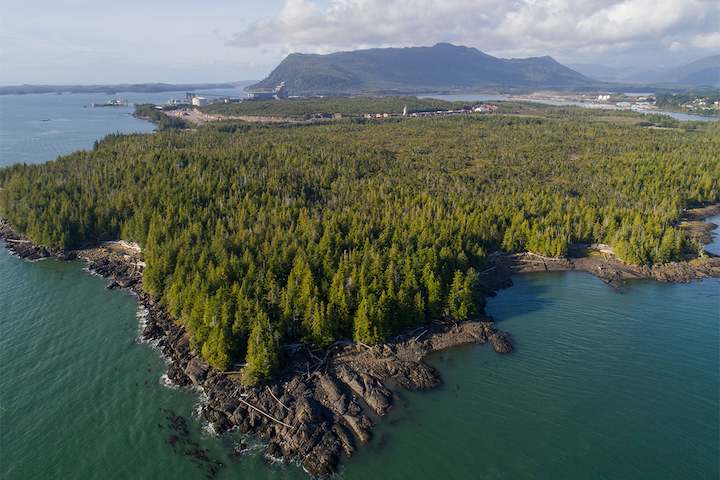The Prince Rupert Port Authority (PRPA) announced today that the Ridley Island Export Logistics Project (RIELP) has reached a significant milestone with the receipt of its final determination of the Federal environmental effects evaluation review.
The Federal Authorities have determined, in accordance with the requirements of Section 82 of the Impact Assessment Act (IAA), that the Ridley Island Export Logistics Project is not likely to cause significant adverse environmental effects. This concludes the Federal environmental review process, which is a prerequisite for the Federal Authorities to consider the required authorizations for the project to proceed.
Following receipt of required permits, early works are planned to begin in early March, with tree clearing and site preparation activities. PRPA continues to work toward making a Final Investment Decision on the project with its commercial partners, expected later this year.

Planned for the southern end of Ridley Island, the export logistics complex will be an integrated ecosystem of large-scale bulk and breakbulk transload facilities, intermodal rail yard, and a container storage yard. The development will create an innovative and competitive transloading facility for commodities such as plastic pellets, cereal grains, speciality agriculture crops, lumber, and pulp to be loaded directly from rail into containers for export, creating 400,000 TEUs of export capacity in the first phase. The new export logistics facility will increase efficiencies in export supply chains, maximizing value to Canadian exporters while supporting the substantial growth of the intermodal business at the Port of Prince Rupert.
The Ridley Island Export Logistics Project is a vital component of the Port of Prince Rupert’s development plan for fully integrating intermodal activities between terminal, logistics and rail. The environmental benefits of the export logistics project include the densification of transload activities into a single location on Ridley Island to minimize land impacts, and proximity to Fairview Container Terminal via the dedicated Fairview-Ridley Connector Corridor to minimize container truck movements and emissions, while maximizing rail usage on common infrastructure.

Follow us on social media: